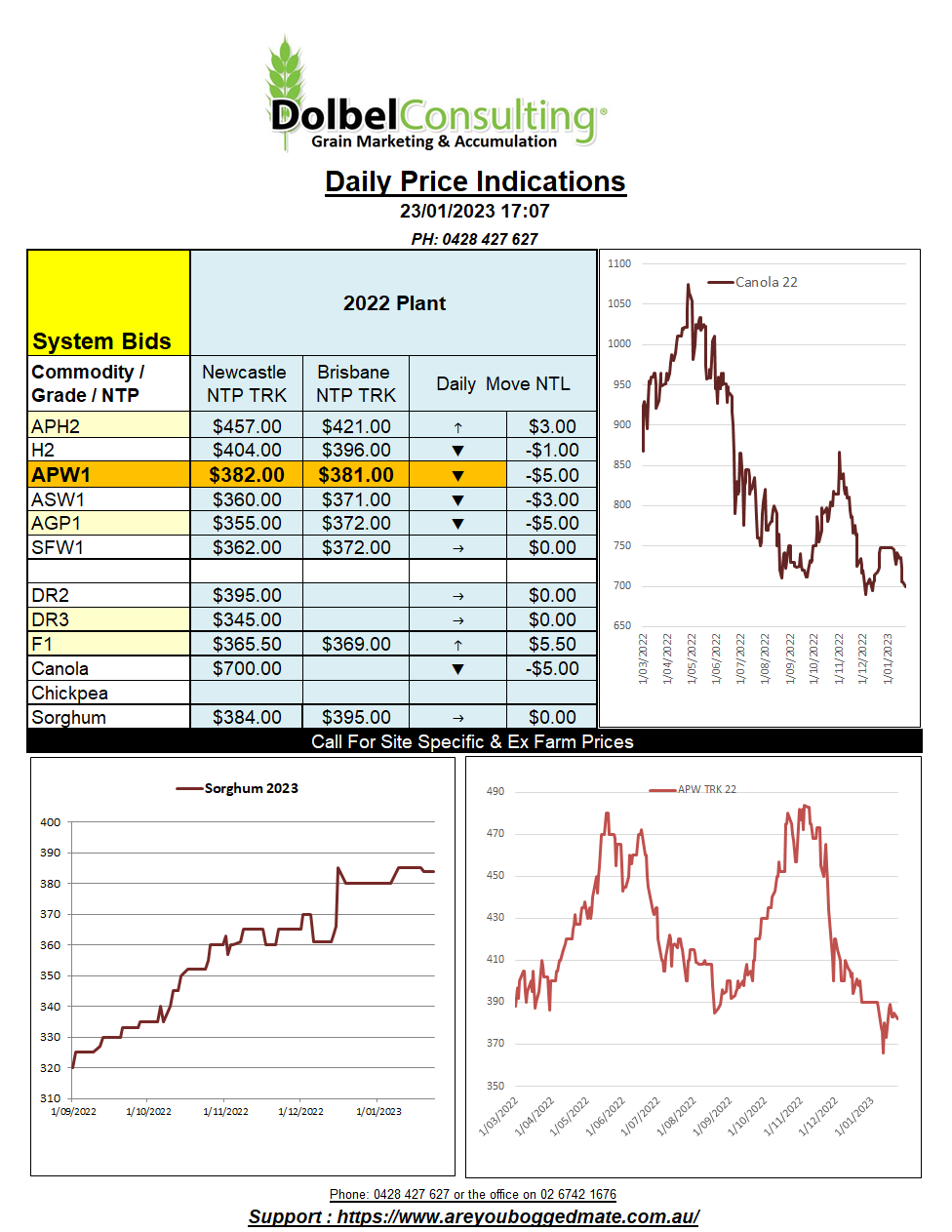23/1/23 Prices

Argentina is expected to see some good storms over the next few days. We all know one rain event doesn’t break a drought. 40mm of rain will not correct the damage done to summer crops after weeks (some places months) of hot dry weather, but it should improve, or at least stabilise, the condition of what’s left alive. Not to mention the phycological benefit a few storms can make to those most affected.
There are photos corn cobs from Argentina on social media with just a dozen grains set on plants no taller than 3’or 4′. These crops are done, this rain will mean nothing to them. This rain may actually be more benefit to the winter crop fallow than anything currently trying to set seed. These storms are expected on the 24th, Tuesday next week, a change in the modelling could create further volatility in futures.
The latest GFS rainfall model for the US is also a little worse than it was a day ago. Rainfall that was predicted to fall across the driest parts of the HRW belt could now fall further east, missing much of southern Kansas, NW Oklahoma and northern Texas.
Large swaths of the northern parts of the Volga Valley in Russia have also seen less than ideal weather this last week. Temperatures plummeted to as low as -27C. Many locations saw the mercury down to -12 to -15C across the eastern and central winter wheat region of the Upper Volga Valley. The coldest temperatures were towards the NE, closer to where spring wheat is grown. Unlikely to have an impact on potential winter kill numbers there. Towards the west and around the Volga Valley is worth watching during the Russian spring.
Paris milling wheat was flat, not following US futures at Chicago higher. The change in rainfall prediction appears to have rallied the HRW contract more than the spring wheat and soft red winter wheat at Chicago. There were gains in cash FOB values for all 4 grades out of the PNW, HRW leading.
